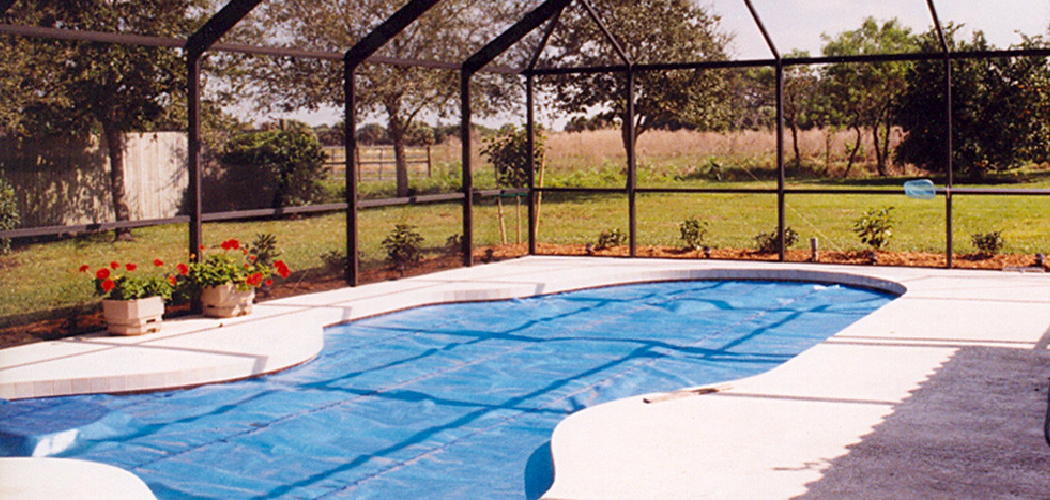Are you tired of frequently cleaning your pool only to have it get dirty again as soon as possible? Do the high chemical maintenance costs associated with maintaining a clean, clear pool leave you wanting an easier solution?
With a solar pool cover, you can reduce not only your time spent on tedious upkeep but also the amount of money that goes into keeping your swimming oasis looking inviting and pristine.
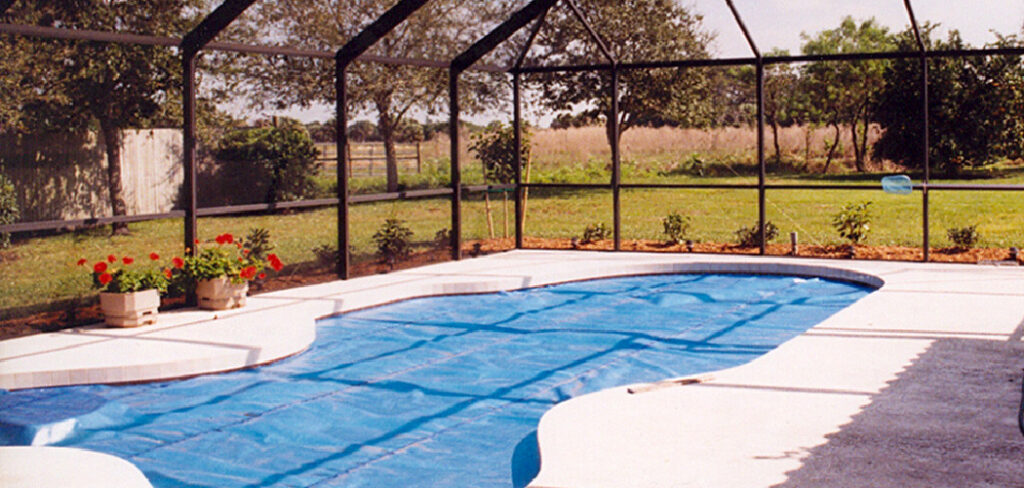
In this blog post, we’ll take a look at what makes up a solar pool cover and provide step-by-step instructions on how to put on a solar pool cover so that you can reap all of its many benefits.
So if you’re ready to make life around your backyard swimming hole much simpler and cheaper in the long run, read on!
Do You Leave Solar Pool Cover on All the Time?
No, it is not advised to leave your solar pool cover on all the time. Doing so can cause damage to the cover and reduce its effectiveness in keeping your pool clean and warm. In general, you’ll want to put the cover on when you’re done swimming for the day and remove it when you plan to swim again. This will allow the cover to do its job while minimizing any damage or wear and tear. Additionally, leaving your pool uncovered for at least a few hours each day will help maintain proper water circulation and reduce the chance of algae growth.
When you’re not using your solar pool cover, make sure to store it in a safe place away from direct sunlight. Storing the cover in a cool, dry place will help it last longer and perform better when you do need to use it. Additionally, always make sure the cover is completely dry before putting it away so that mold or mildew does not form. With proper storage and care, your solar pool cover should provide years of service for keeping your pool clean and warm.
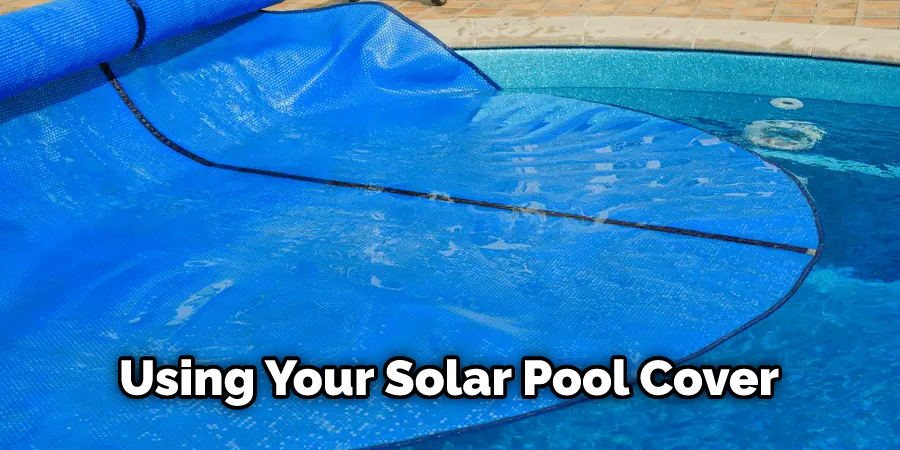
In short, it is not recommended that you leave your solar pool cover on all the time. Doing so can cause unnecessary damage to the cover and reduce its effectiveness in keeping your pool safe and clean. To get the most out of your solar pool cover, make sure to put it on when you’re done swimming for the day and remove it when you plan to swim again. Additionally, store the cover in a cool, dry place away from direct sunlight when not in use. With proper storage and care, your solar pool cover should last for years to come.
Does a Solar Pool Cover Need to Touch the Water?
No, a solar pool cover does not need to touch the water in order to work. In fact, you should always leave some space between the pool cover and the water. Depending on the size of your pool, it should be between 6-8 inches above the water. This is necessary to ensure that your pool cover does not become weighed down by the water it is covering.
If a solar pool cover touches the surface of the water, it can cause waves that will move around the edge of the cover and lead to tearing or other damage to it. It’s also important to leave some space between the edges of your pool cover and any ladders or steps in order to prevent any possible friction between them, which can also lead to wear and tear on your solar pool cover over time.
Therefore, you should always make sure there is enough space between your solar pool cover and any objects near it, as well as the surface of the water. Doing so will ensure that your solar pool cover works properly and is not damaged unnecessarily.
9 Methods How to Put on a Solar Pool Cover
1. Automatic Pool Cover
An automatic pool cover is a motorized pool cover that can be opened and closed with the push of a button. Automatic pool covers are more expensive than manual covers, but they are much easier to use. Automatic covers also tend to last longer since they are not subject to the same wear and tear as manual covers.
If you have an automatic pool cover, the installation process is fairly simple. Try to have at least two people helping you, as the cover can be heavy to lift. However, if you are working alone, be sure to use a lift or hoist system to help you out.
2. Solar Blanket
A solar blanket is a type of pool cover that is made from a thin layer of material that is designed to absorb heat from the sun. Solar blankets are available in a variety of colors, but clear blankets are the most effective at absorbing heat.
Solar blankets typically cost less than automatic covers, but they require more effort to install and remove. While the blanket will reduce water evaporation and heat loss, it will not eliminate these completely.
3. Liquid Solar Cover
A liquid solar cover is a type of pool cover that is applied as a liquid and dries to form a thin film on the surface of the pool. Liquid solar covers are less expensive than solar blankets, but they can be more difficult to apply evenly.
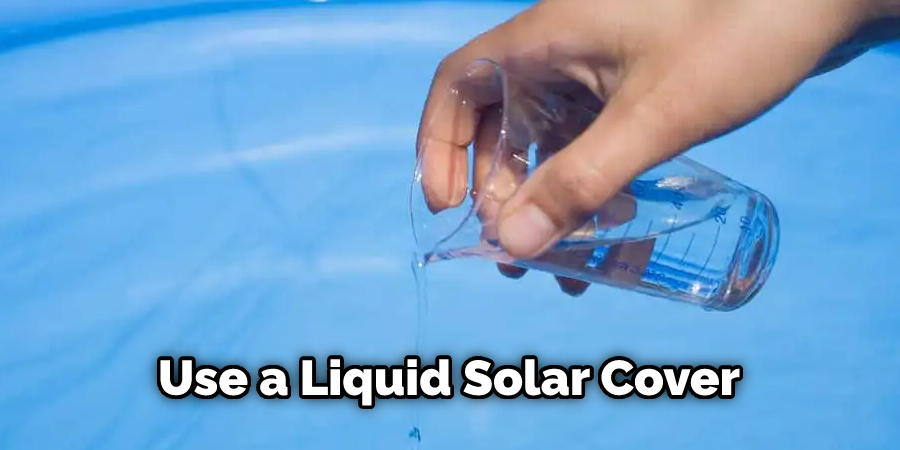
Liquid solar covers also typically only last for one season before they need to be replaced. Make sure to read and follow the instructions on your liquid solar cover carefully. Additionally, it’s important to make sure that the pool temperature is at least 70 degrees Fahrenheit before applying.
4. Winter Cover
A winter cover is a type of pool cover that is designed to keep your pool clean and free of debris during the winter months. Winter covers typically cost more than solar blankets or liquid solar covers, but they will last for several years if properly cared for. Winter covers also provide some insulation for your pool, which can help to reduce heating costs.
5. Leaf Net Cover
A leaf net cover is a type of pool cover that is designed to catch leaves and other debris before they fall into your pool. Leaf net covers typically cost less than winter covers, but they need to be replaced more often. Leaf net covers can also make it more difficult to swim in your pool as they can block sunlight from reaching the water. Although leaf net covers are not as effective at preventing evaporation and heat loss, they can be a great way to keep your pool clean.
6. Safety Cover
A safety cover is a type of pool cover that is designed to prevent children and animals from falling into your pool when it is not in use. Safety covers must be custom-fitted to your pool and typically cost more than other types of covers. However, safety covers can provide peace of mind knowing that your family and pets are safe around your pool.
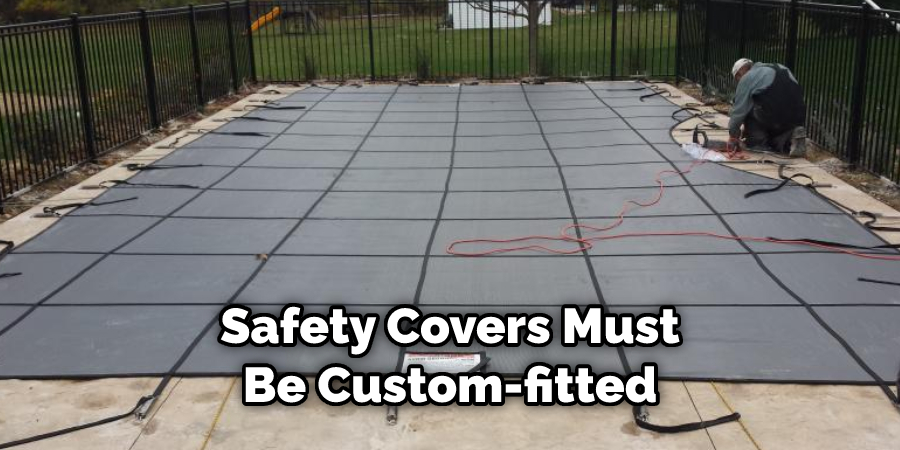
While safety covers are usually anchored to the deck or pool frame, they must be periodically checked to make sure that they are secure and not leaking. Safety covers are not designed to keep your pool warm, so be sure to use a solar cover if you want to maintain the temperature of your pool.
7. Inflatable Cover
An inflatable cover is a type of pool cover that can be inflated with air when it is not in use. Inflatable covers are typically less expensive than safety covers, but they do not provide the same level of protection. Inflatable covers can also be more difficult to store and transport than other types of covers.
To use an inflatable cover, simply blow it up and place it over the pool when it is not in use. Make sure to secure the cover with weights or other objects to prevent it from being blown away in a strong wind.
8. Damage
It is important to remember that all types of pool covers can be damaged by excessive heat, chemicals, ultraviolet radiation, and other environmental factors. To prevent damage to your pool cover, make sure to check it periodically for any signs of wear or tear. If you notice any damage, replace the cover as soon as possible in order to protect your pool from further damage.
9. Maintenance
Pool covers should be kept clean throughout the season in order to maximize their effectiveness. Be sure to regularly remove any leaves, debris, or dirt that has accumulated on the cover. If your pool cover is made of a mesh material, you may need to brush it down with a soft-bristled brush occasionally to keep it in good condition.
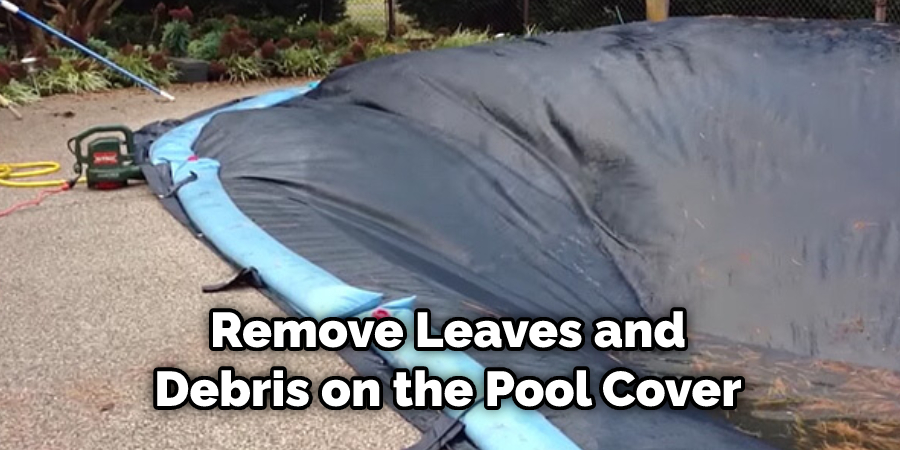
Additionally, you should inspect the cover regularly for any tears or damage that could allow water to escape from the pool. If you notice any damage, you should replace the cover right away. After the swimming season is over, be sure to store the cover in a cool, dry place to protect it from damage.
Conclusion
Putting on a solar pool cover can help reduce swimming pool maintenance and save money in the long run. It also helps the environment by conserving water and energy, which is an added bonus. The process of putting it on is relatively simple, but takes a bit of time and patience.
With these steps outlined here, anyone can easily and quickly put on a solar pool cover. If you do not own a solar cover yet, consider investing in one today – they are well worth the investment over the long term! Thanks for reading, and we hope this has given you some inspiration on how to put on a solar pool cover!

